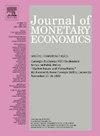Wealth taxation and life expectancy
IF 4.3
2区 经济学
Q1 BUSINESS, FINANCE
引用次数: 0
Abstract
This paper studies the role of wealth taxes in providing insurance against lifespan risk through the lens of a dynamic Mirrlees model with altruism. I derive novel formulas linking optimal taxes on savings and bequests to the degree of annuity market imperfections at the optimum. In the presence of positive correlation between productivity and life expectancy, optimal annuity markups are positive in expectation. This creates a motive not only for taxing savings but also for subsidizing bequests. When calibrating the model, I find that the forces of differential longevity lead to optimal wealth taxes commensurate with prevailing wealth tax rates in developed countries. Relative to the US status quo, optimal policies provide work incentives by increasing welfare of the short-lived at the bottom of the skill distribution. This channel generates significant welfare gains. Replacing the optimal annuity markup by a nonlinear history-independent approximation generates small efficiency losses.
财富税和预期寿命
本文通过一个具有利他主义的动态莫里斯模型,研究了财富税在提供针对寿命风险的保险中的作用。我推导出新颖的公式,将储蓄和遗赠的最优税收与年金市场最优不完善程度联系起来。在生产率与预期寿命存在正相关关系的情况下,最优年金加价在期望上是正的。这不仅产生了对储蓄征税的动机,也产生了补贴遗赠的动机。在校准模型时,我发现寿命差异的力量导致了与发达国家现行财富税率相称的最优财富税。相对于美国的现状,最优政策通过增加技能分配底层短命者的福利,提供工作激励。这一渠道产生了显著的福利收益。用与历史无关的非线性近似代替最优年金加价产生很小的效率损失。
本文章由计算机程序翻译,如有差异,请以英文原文为准。
求助全文
约1分钟内获得全文
求助全文
来源期刊

Journal of Monetary Economics
Multiple-
CiteScore
7.20
自引率
4.90%
发文量
90
审稿时长
74 days
期刊介绍:
The profession has witnessed over the past twenty years a remarkable expansion of research activities bearing on problems in the broader field of monetary economics. The strong interest in monetary analysis has been increasingly matched in recent years by the growing attention to the working and structure of financial institutions. The role of various institutional arrangements, the consequences of specific changes in banking structure and the welfare aspects of structural policies have attracted an increasing interest in the profession. There has also been a growing attention to the operation of credit markets and to various aspects in the behavior of rates of return on assets. The Journal of Monetary Economics provides a specialized forum for the publication of this research.
 求助内容:
求助内容: 应助结果提醒方式:
应助结果提醒方式:


